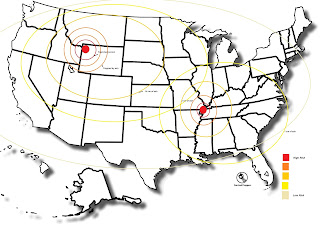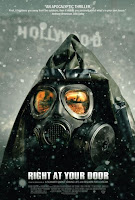 First, there is no one right place to live. Everyone has different needs and values to consider when choosing a location to put down roots. Many people never move, they live where they are born and that is great. In the U.S., however, many people choose to move around for many reasons; finances, employment, schools, family ect. For those of you that are looking to move in the near future, this guide will help you make some decisions about where to live or at the very least get you thinking about what to consider before making the leap.
First, there is no one right place to live. Everyone has different needs and values to consider when choosing a location to put down roots. Many people never move, they live where they are born and that is great. In the U.S., however, many people choose to move around for many reasons; finances, employment, schools, family ect. For those of you that are looking to move in the near future, this guide will help you make some decisions about where to live or at the very least get you thinking about what to consider before making the leap.There are many factors to consider before moving, we will go over each one individually (in no particular order) with maps and statistics, then combine the most important factors and try to come up with the best locations overall.
1. What country should I live in?
This is a complex question and I am only going to touch on it briefly. It's a wonderful world out there, but not all countries are the same. Lets just say, I would avoid countries with instability, war zones, religious hot beds, high risk of natural disasters, overpopulated, or high disease and crime rates. For the sake of this guide, I will only be examining the U.S. and Canada.
2. Extreme disasters (Infrequent)
For the sake of this list I will not discuss, end of the world events, because lets face it, if it's the end of the world I just want a good spot to watch from and where I live won't really matter if it's all over for us all. However, in the U.S. there are two major threats that would mean danger for many people. 1. The Yellowstone super-volcano http://survivalpreppers.blogspot.com/2012/07/yellowstone-caldera-to-erupt.html and 2. the New Madrid earthquake zone. Each disaster has happened in the past and both are predicted to happen again based on historical recurrences. The impact zones are shown on the map.
3. Natural Disasters (frequent)
A. Flooding - Most of the U.S. lives near water for obvious reasons, unfortunately this means flooding. Sometimes caused by storms, sometimes, winter thaw. This FEMA map shows states prone to frequent flood damage. Be sure to check a particular area for more accurate information. Be aware of local flood planes, 100 year flood planes and rainfall expectations in your area.

B. Drought/Extreme Heat - Global weather patterns, natural topography, jet-stream, ocean currents can all affect climate, including rainfall and drought. Many areas are dry year after year, but any area can experience a drought. The NOAA frequently releases drought reports that look like this typical map.
C. Fire - Wildfires often follow the trends of drought and extreme heat. Many dry areas are susceptible for frequently than others.
D. Storms/Hail/Lightning
E. Landslides/Mudslides/Avalanche
F. Blizzard/Extreme Cold
G. Hurricane - Tropical storms formed over the Atlantic Ocean can become more powerful and turn into a hurricane hitting mainland along the East Coast. Any area along the East Coast is susceptible, however Florida, Lousiana and Texas are hit more frequently.
H. Tornado - Caused by cold air currents from the north along the Rockey Mtns. meeting up with warm air flow from the Gulf of Mexico, tornadoes are found frequently in the area known as Tornado Alley and move East with weather patterns.
I. Earthquake- This USGS map shows fault lines, areas where earthquakes are typical produced.
J. Volcano - Caused by tectonic plate movement, volcano eruptions are mostly rare in North America. The ring of fire area being the most susceptible. Of course, areas east of a volcano eruption can be affected by smoke and ash, depending on weather patterns.
K. Tsunami - Caused by earthquakes under or on the ocean floor, tsunamis occur typically along the ring of fire region. Damage is often located up to 25 miles of the coastal areas. While the west coast is largely susceptible, the east coast is also at risk.
L. Epidemics - Disease and epidemics are spread fastest among highly populated areas, but can often originate from rural farm areas or out of the country.
4. Man made Disasters
A. Nuclear Power (meltdown/leaks/spills) - The U.S. decided to move many of its nuclear waste to Yucca Mountain in Nevada, this map shows Nuclear Power Plants, Routes of waste removal and Nuclear missile sites.
B. Dam Breaks
C. Infrustructure
5. Water
6. Climate/Weather/Growing season - http://www.bonap.org/Climate%20Maps/ClimateMaps.html
7. Crime
8. Population
9. Taxes/Cost of land
10. Political Affiliation
11. Unemployment
12. Pollution
Analysis:
 |
| Disaster Map |
So, where should I live?
Vancouver
Toronto
Washington
Oregon
Wisconsin
Vermont
New Hampshire
Maine
Colorado
Utah
Virgina
Ohio
Pennsylvania
N. Carolina
Georgia
Michigan
Least appealing:
Oklahoma
Kansas
Louisiana
Florida
Nevada
Los Angles
http://moving.about.com/od/BestPlacestoLive/a/Best-Places-To-Live.htm
http://www.survivalblog.com/retreatareas.html
There is a lot of information to put together here. Hope this helps.
Sources:
Risks & hazards - A State by State Guide - FEMA196
USGS
NOAA













































